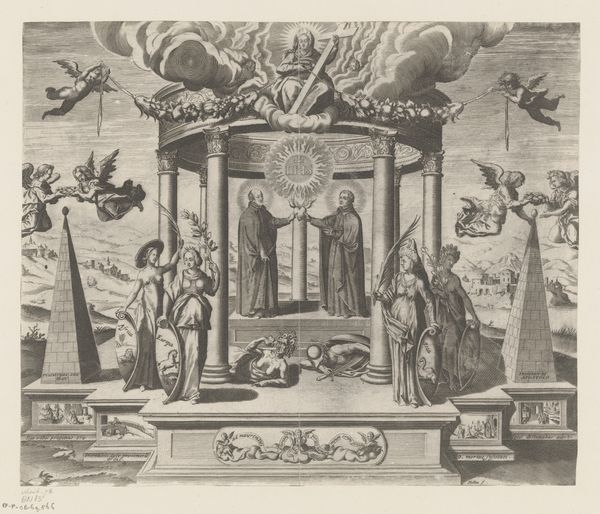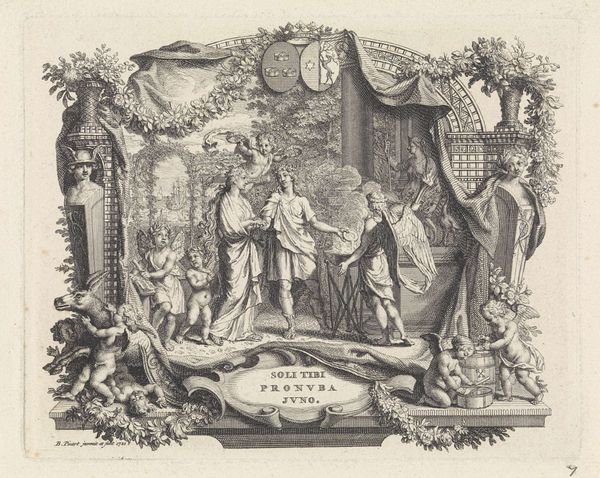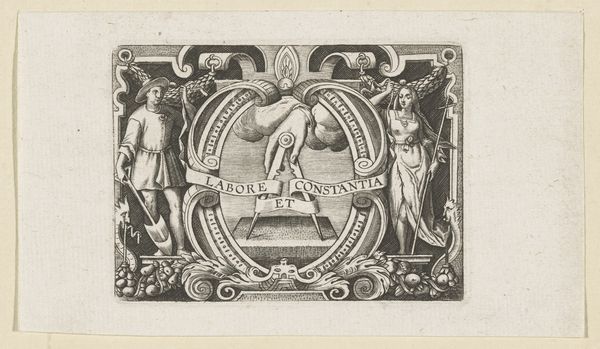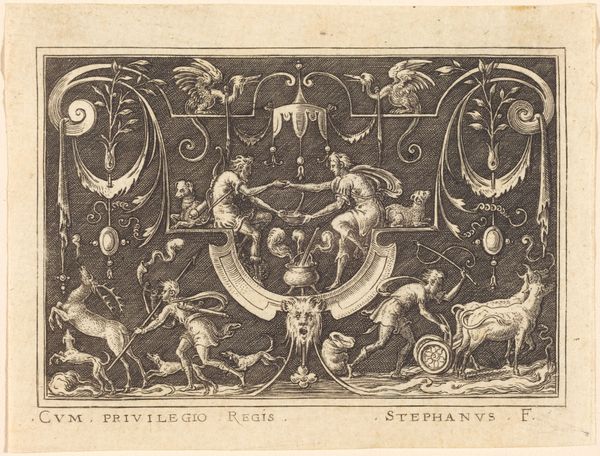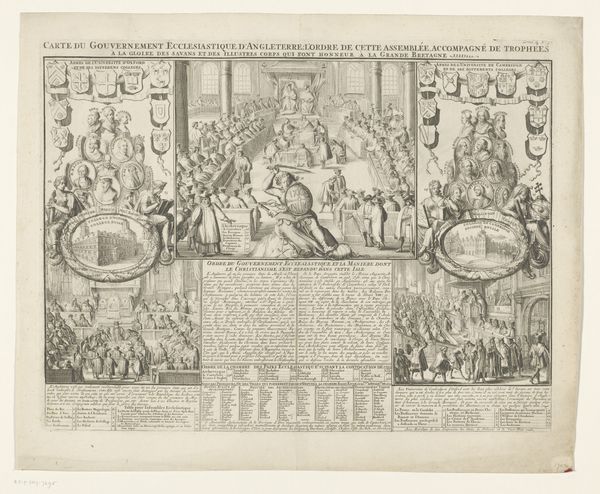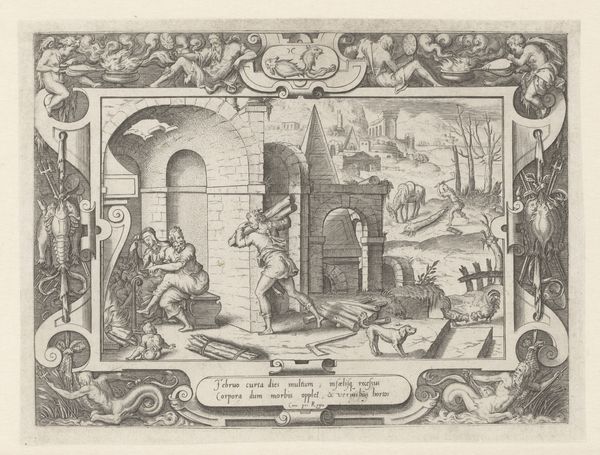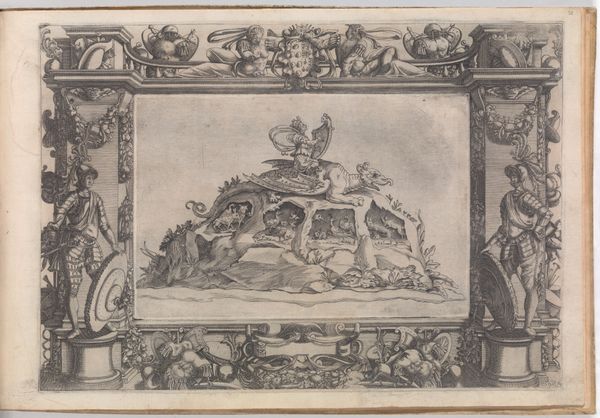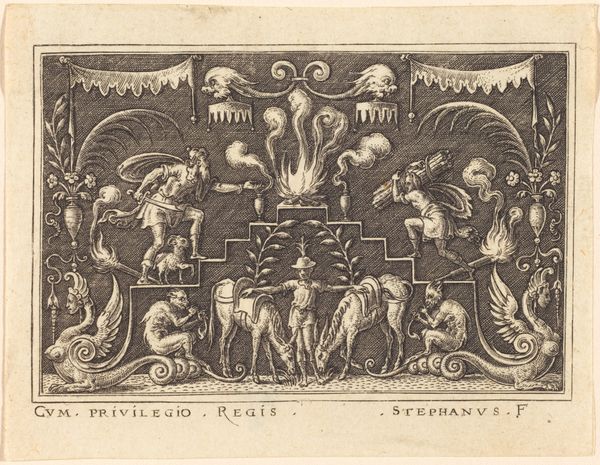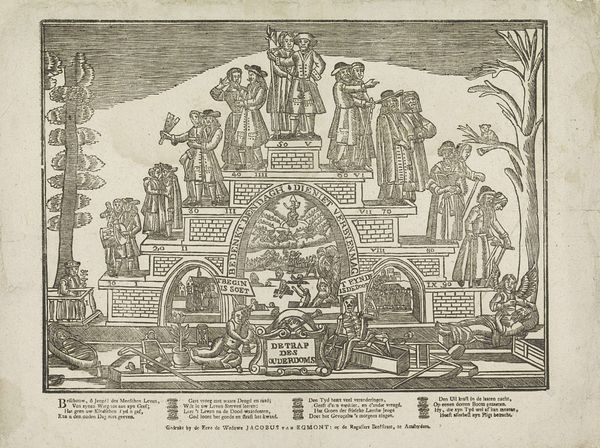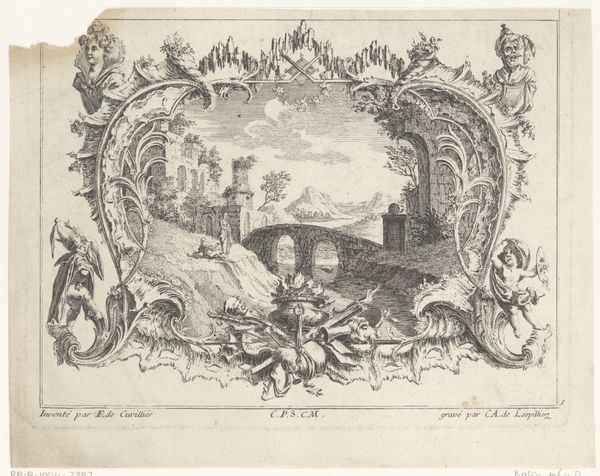
Dedication to Clement XII Pontifex Maximus c. 18th century
0:00
0:00
graphic-art, print, etching, engraving, architecture
#
graphic-art
#
baroque
# print
#
etching
#
old engraving style
#
history-painting
#
engraving
#
architecture
Dimensions: 18 x 26 1/8 in. (45.72 x 66.36 cm) (plate)
Copyright: Public Domain
Curator: Oh, my. This Piranesi print— “Dedication to Clement XII Pontifex Maximus,” from around the 18th century— just exudes Baroque theatricality. The layering, the depth! What do you make of it? Editor: It strikes me as almost overwhelmed by its own monumentality. Look at the profusion of detail—stone, fabric, foliage— all rendered with incredible labor in etching and engraving. What do you think he's trying to tell us about labor, here? Curator: Ah, but isn't that the delicious tension? It's a celebration, a swirling dance dedicated to Pope Clement. See how the oval frames the inscription like a blessing, surrounded by symbols of power and artistry. I imagine it feels a bit like Rome itself: glorious ruins, fragments pieced together. It whispers of both the past and the future simultaneously. Editor: Pieced together, yes, but meticulously composed for maximum effect. He’s not just presenting Rome; he's crafting a specific image of power and patronage. Notice the sheer variety of surface textures—from rough stone to smooth drapery? It's a masterclass in manipulating the medium. How conscious was Piranesi of the engraving’s ultimate distribution and consumption? Was this a print for the elite, or for a wider audience? Curator: I believe the beauty is a genuine form of worship. Think of it as devotion manifested in ink. He’s carefully selected visual motifs from architectural elements to sculptural fragments. You can lose yourself within it, dream in the chiaroscuro... What secrets are concealed beneath all of these architectural fragments? Editor: Or maybe consider what practical demands such work placed on Piranesi himself, the sheer physical effort and resources that went into the engraving plates. It reveals something very real about 18th-century production, both artistic and commercial. The weight of these processes becomes inherent to the visual experience, an allegory of the artist himself laboring away. Curator: So well observed. He uses light to animate those classical forms. You can almost hear the echoes of the forum… Now I'm really wondering if this image is more of a eulogy rather than an ode. Editor: An ode wrought by labor, indelibly etched on copper—a testament not just to the patron, but to the enduring power of the means of artistic production, too. Fascinating!
Comments
No comments
Be the first to comment and join the conversation on the ultimate creative platform.
